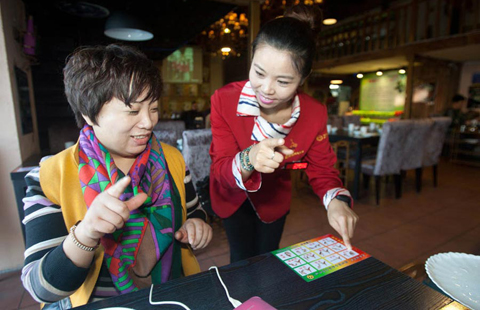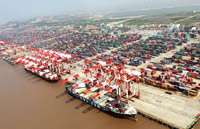China banks' 2014 new yuan lending hits record high
(Xinhua) Updated: 2015-01-15 13:34Bob Liu, an analyst at the China International Capital Corp (CICC), deemed interest rates in the real economy as "still high," with the monthly bill discount rate, a gauge of financing costs in the real economy, staying at a high level in January.
Real interest rates have risen by more than nominal interest rates considering the increased risk of deflation, said Liu.
On the positive side, the government bond yield has fallen and flattened, which may indicate further easing of monetary policy, Liu said, expecting the PBOC's monetary policy focus to remain on reducing the financing costs in the real economy.
"We maintain our forecast of one interest rate cut and four RRR cuts in 2015, which are more likely to happen in the first half of 2015," Liu said.
Echoing Liu, chief China economist with Bank of America Merrill Lynch Lu Ting expected the country's monetary policy to remain supportive in coming months, and monetary easing will be continued in 2015.
With the end of the one-way appreciation of yuan, the private sector tends to keep a larger share of their foreign exchange proceeds, depriving the PBOC the traditional source of base money supply and likely forcing the PBOC to cut RRR several times in 2015, Lu said.
"With a lower inflation, we believe the PBOC still has the room to cut benchmark deposit rate by 25 basis points and lending rates by 40 basis points each in 2015," Lu said in a research note to media.
China's central bank remained silent about whether more easing measures will come, saying on Friday that it will "continue with its prudent monetary policies in 2015 with better coordination of tight and loose monetary measures and proper fine-tuning."
The central bank will adapt to China's economic "new normal" of slower growth but higher quality and highlight industrial transformation and restructuring, said the PBOC at a meeting on its work in 2015.
- 2015: Doing business with the world
- Xiaomi takes on Apple in large screen handset sector
- China regulators promise taxi industry shakeup after strikes
- Thousands of Australian sheep fly to China
- Dalian strikes $4b deal to build 20 malls
- Armless young man runs his own store
- Wanda says four investors to put $3.9b into 20 new malls
- China banks' 2014 new yuan lending hits record high

















